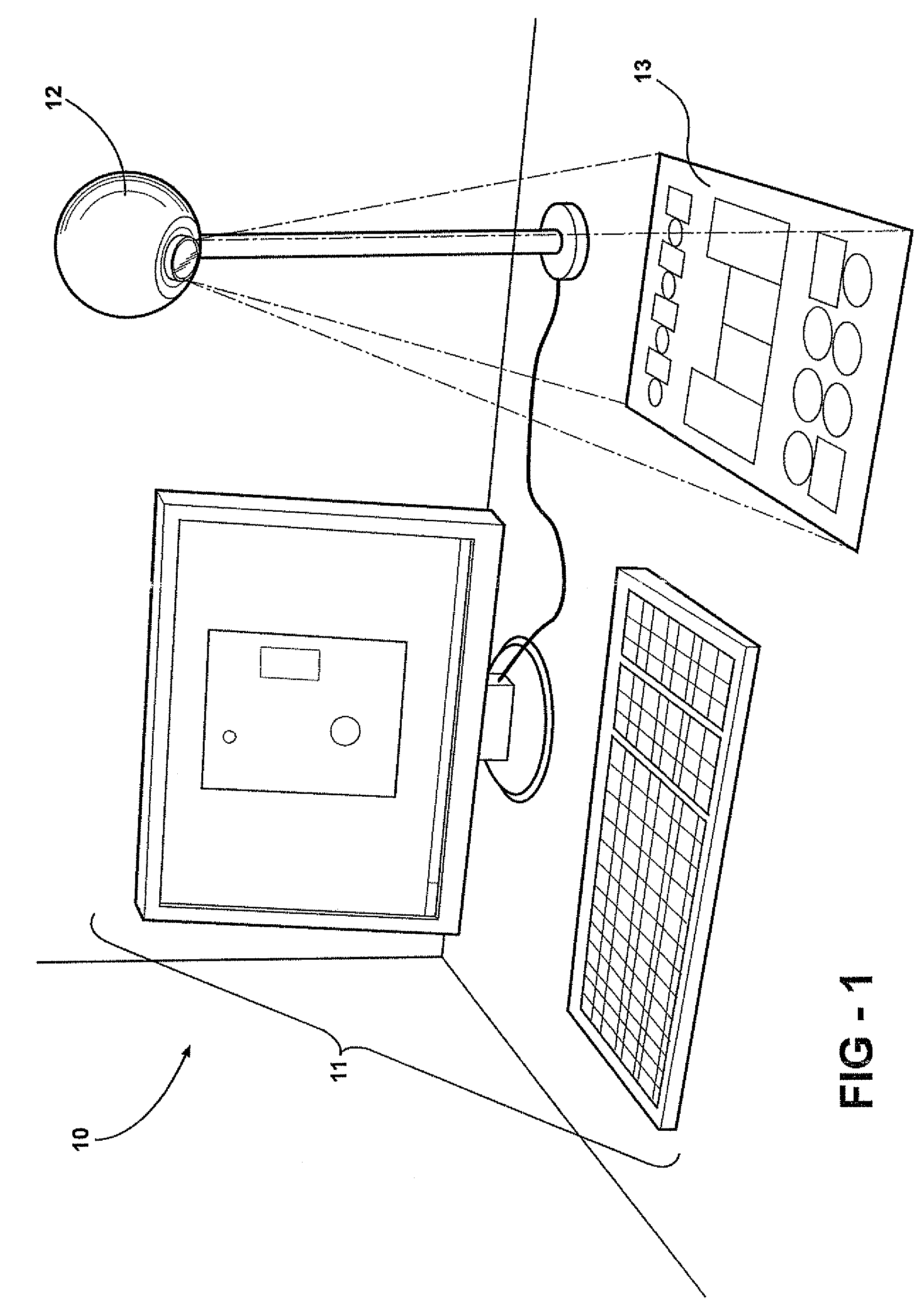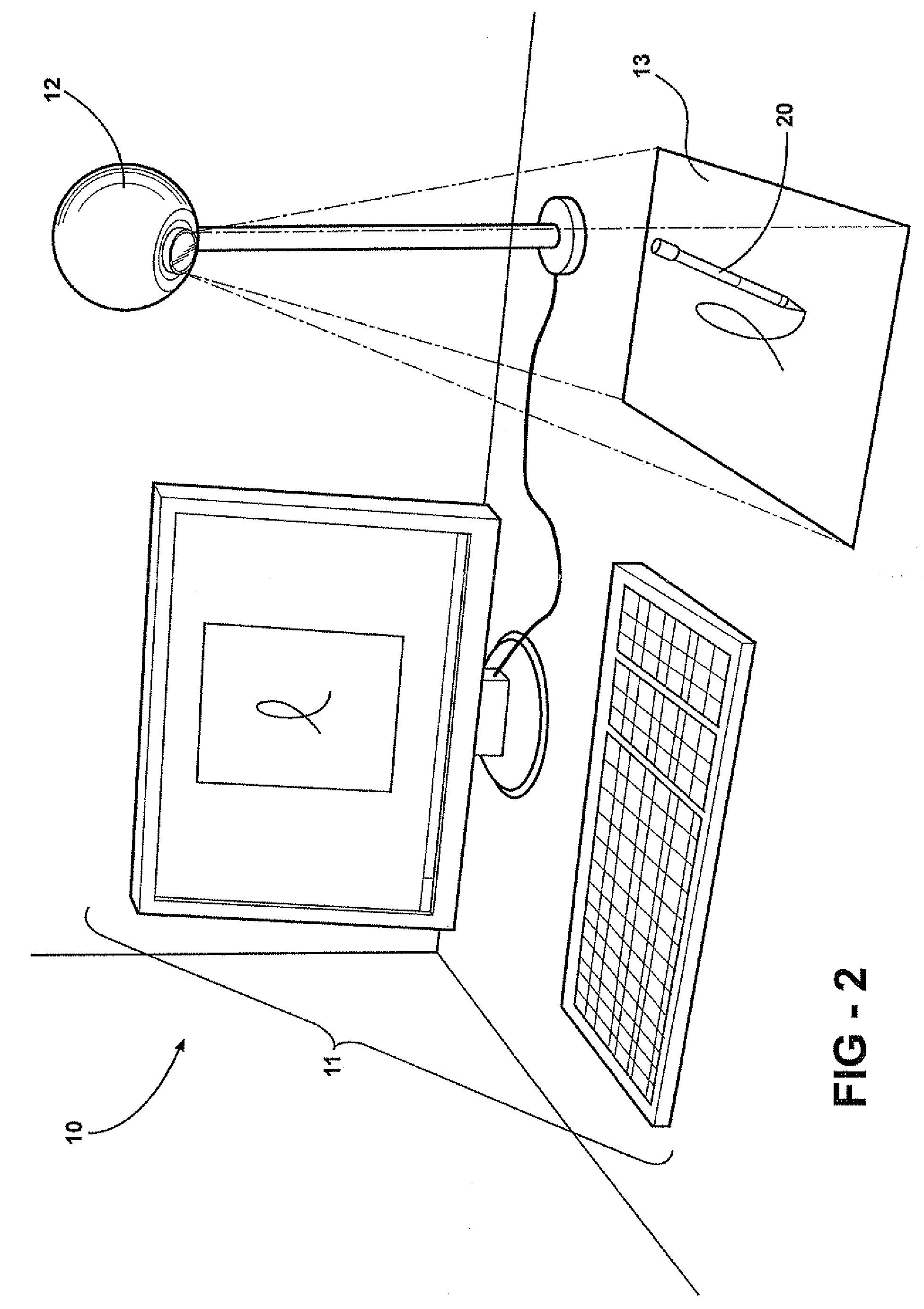Method for identifying color in machine and computer vision applications
- Summary
- Abstract
- Description
- Claims
- Application Information
AI Technical Summary
Benefits of technology
Problems solved by technology
Method used
Image
Examples
example 1
[0061]Consider Two Pixels with the Following Components:
[0062]Pixel 1: (R, G, B)=210, 50, 40 and Pixel 2: (R, G, B)=210, 190, 80
[0063]In ratio space values: Pixel 1: (r, g, b)=1.0, 0.238, 0.190 and Pixel 2: (r, g, b)=1.0, 0.904, 0.381 then the distance equation for the Pixel1 and Pixel2 become:
Dist 1=POS(−1000*(1.0−1.0))+POS(1000*(0.238−0.8))+POS(1000*(0.190−0.8))=0+0+0=0
Dist 2=POS(−1000*(1.0−1.0))+POS(1000*(0.904−0.8))+POS(1000*(0.381−0.8))=0+10.4+0=10.4
[0064]The result of distance equation is “0” i.e. the Pixel 1 passes the threshold test and is identified as a rich shade of red and the output of the filter is set to black. On the other hand, Pixel 2 does not pass the threshold test and is categorized as a fade or pale shade or unidentified color, therefore, the output of the filter is set to white (i.e. 255).
[0065]There are several ways for defining a filter and setting threshold values. For example, a pixel representing a green color might register the following values in the ra...
example 2
[0068]The camera output might register (R, G, B)=0.6, 0.8, 92.8 and (r, g, b)=0.006, 0.008, 1.0 for a blue spot over a sunny part of the field of view or (R, G, B)=3.2, 14.3, 63.5 and (r, g, b)=0.05, 0.225, 1.0 over a shadowy region of the field of view. The camera output for a red spot might register (R, G, B)=99.6, 0.4, 0.4 and (r, g, b)=1.0, 0.004, 0.004 over a sunny part of the field of view or (R, G, B)=64.7, 17.8, 4.6 and (r, g, b)=1.0, 0.275, 0.07 over a shadowy region of the field of view. While the original (R, G, B) values might fluctuate significantly from sunny regions to shadowy spots of the field of view, the ratio space values make it easy to identify the color of interest.
[0069]Another advantage of the present method in identifying color is the ability to optimize the “camera parameters” for varying lighting conditions. Camera parameters such as: gain, brightness, contrast, saturation, sharpness, white balance, backlight compensation, etc. can be optimized for a give...
PUM
 Login to View More
Login to View More Abstract
Description
Claims
Application Information
 Login to View More
Login to View More - R&D
- Intellectual Property
- Life Sciences
- Materials
- Tech Scout
- Unparalleled Data Quality
- Higher Quality Content
- 60% Fewer Hallucinations
Browse by: Latest US Patents, China's latest patents, Technical Efficacy Thesaurus, Application Domain, Technology Topic, Popular Technical Reports.
© 2025 PatSnap. All rights reserved.Legal|Privacy policy|Modern Slavery Act Transparency Statement|Sitemap|About US| Contact US: help@patsnap.com



